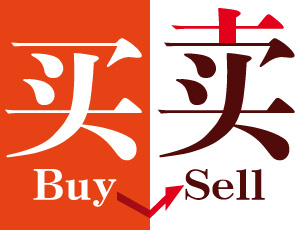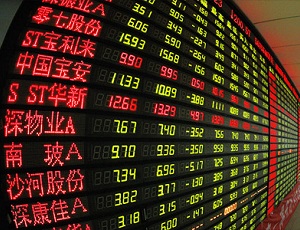Shanghai-Hong Kong Stock Connect to Launch Nov. 17 – Interview with Prof. Terrill Frantz

On Monday, the Shanghai-Hong Kong Stock Connect is set to officially launch, after months of anticipation. The scheme aims to link up the stock exchanges of Hong Kong (HKSE) and Shanghai (SSE), allowing investors in either exchange to trade on both stock markets.
On the Southbound link, institutional investors and individuals with over RMB 500,000 in their brokerage accounts may trade Hong Kong shares through a broker on the Shanghai stock market; while heading Northbound, Hong Kong investors and international investors with Hong Kong brokerage accounts may trade shares listed on the SSE. Note: there are no limitations on the type of investor or net worth on the Northbound link.
RMB liberalization
Both channels will use the RMB for transactions. Northbound investors will use offshore RMB deposits to trade on the Shanghai exchange; Southbound investors will trade on the Hong Kong Stock Exchange using Hong Kong dollars, like all other participants, but clearing will take place in RMB. Southbound investors trading on the Hong Kong exchange will have to convert their RMB into Hong Kong dollars when entering the market, and convert them back into RMB when exiting a position.
Not all shares will be eligible to be traded under the scheme. On the Shanghai Stock Exchange, Northbound investors are limited to purchasing A-shares listed on the SSE 180 and SSE 380 Indices. On the Hong Kong Stock Exchange, Mainland investors may trade shares listed in the Hang Seng Large Cap and Mid Cap Indices.
Investors on both sides may also trade shares of companies that are listed on both the SSE and HKSE, as A-shares and H-shares respectively. A-shares refer to RMB-denominated shares on Mainland stock exchanges and H-shares to RMB-denominated shares in Chinese companies traded on the HKSE.
![]() RELATED: RMB Internationalization and the Shanghai FTZ
RELATED: RMB Internationalization and the Shanghai FTZ
This has led to an interesting situation where shares in the same company now trade at different prices in Hong Kong and Shanghai, a phenomenon tracked by the Hang Seng China AH Premium Index. With these shares now available to both SSE and HKSE participants, this difference should erode. There is, however, a ban on all types of short selling in the Northbound link (HKSE participants trading on the SSE), so consolidation would likely see a rise in H-shares, rather than a tumble in Shanghai A-shares.
Trade quotas
Apart from the types of shares, the pilot scheme comes with limitations on the total RMB value of shares that can be traded through the exchanges. For the Northbound link, there is an aggregate cap of RMB 300 bn and RMB 13 bn daily. Southbound trading, meanwhile, will be limited to RMB 250 bn aggregate and RMB 10.5 bn daily.
 To gain a better understanding of these new developments, China Briefing spoke with Terrill Frantz PhD., a professor at Peking University HSBC Business School. While much has been made of the possibility of A-share/H-share arbitrage following the launch of the pilot Connect, Prof. Frantz believes this opportunity may be short-lived.
To gain a better understanding of these new developments, China Briefing spoke with Terrill Frantz PhD., a professor at Peking University HSBC Business School. While much has been made of the possibility of A-share/H-share arbitrage following the launch of the pilot Connect, Prof. Frantz believes this opportunity may be short-lived.
In his mind, a much more interesting dynamic will come from the daily caps on the RMB value of trading. Prof. Frantz foresees real time tracking of the daily trade volume by regulators, but noted uncertainty of what will happen when the volume reaches its daily limit – e.g., will trading be halted ? This could mean the price of a particular popular stock soaring in a short amount of time as trading approaches the quota.
![]() RELATED: CSRC Announces Employee Stock Ownership Plan
RELATED: CSRC Announces Employee Stock Ownership Plan
Prof. Frantz likened it to trading a German company while in New York, where the company files an earnings report at the end of the day. New York traders can take full advantage of the new information, whereas German investors must wait for the market to open the next day. Based on the daily quotas in the Shanghai-Hong Kong Connect scheme, this could happen during the day, on a daily basis.
Impact on QFII program
Previously, the only way for foreign investors to trade A-shares was through the Qualified Foreign Institutional Investors (QFII) program. This was one of the first efforts to internationalize the RMB. Under the program, a small number of foreign financial institutions are allowed to invest in the RMB-denominated securities market in China, including A-shares on the Shanghai and Shenzhen stock exchanges, but also bonds and futures.
 These financial institutions can then sell financial products based on their investments in China. Investments through this channel are still subject to capital controls, with quotas allocated to individual entities. Over the past several years, these quota allocations have played a role in Chinese diplomacy, such as a RMB 80 billion quota granted to French investors during Chinese President Xi Jinping’s European tour earlier this year.
These financial institutions can then sell financial products based on their investments in China. Investments through this channel are still subject to capital controls, with quotas allocated to individual entities. Over the past several years, these quota allocations have played a role in Chinese diplomacy, such as a RMB 80 billion quota granted to French investors during Chinese President Xi Jinping’s European tour earlier this year.
In Prof. Frantz’s view, the impact of the Shanghai-Hong Kong Connect will be to annul the QFII program’s current monopoly on A-shares. He believes the biggest beneficiaries of this development will be individual investors – who in the Northbound link are now allowed to invest directly in the SSE – as well as Mainland investors who will now be legally able to trade on the Hong Kong markets.
![]() RELATED: Frankfurt Beats London to Become First RMB Clearing Hub Outside Asia
RELATED: Frankfurt Beats London to Become First RMB Clearing Hub Outside Asia
But overall, he does not expect the new liberalization to have too great an effect on the market: “The hedge funds and individuals who are able to invest large enough amounts to matter already have access to these shares. The major players have long found ways around the limitations, regardless of whether they were allowed to.”
RMB exchange limits lifted for Hong Kong residents
In preparation for the launch of the Connect, the Hong Kong Monetary Authority (HKMA) announced the abolition of all previous restrictions on Hong Kong residents exchanging RMB to and from other currencies, also effective 17 November. Previously, Hong Kongers could only exchange up to RMB 20,000 a day. Had the restrictions not been lifted, Hong Kong investors would have hardly been able to participate in the new trading channel.
Because Hong Kong banks draw their RMB from the offshore pool in Hong Kong – also referred to as CNH – the move will not affect the flow of RMB from China into Hong Kong. This is also why the daily limit of RMB 80,000 on remittances to China shall remain in place. The new move therefore widens the range of options for offshore RMB, but otherwise does not loosen access to the China-side currency.
![]() RELATED: China Agrees to FATCA Compliance
RELATED: China Agrees to FATCA Compliance
Remaining uncertainty
Overall, a great deal of uncertainty still surrounds the Connect program, despite its pending launch. It is unclear, for example, whether China will charge a capital gains tax (CGT) on the sale of shares, which Hong Kong does levy. Furthermore, under the QFII program, the Chinese authorities have not always collected CGT in the past, which adds to the confusion.
Neither does the Hong Kong-China Double Taxation Agreement touch upon the issue. Levying CGT on Northbound traders would require Hong Kong brokerages to withhold tax on their clients, something they have no experience with – the China Securities Regulatory Commission, for its part, has not given a definitive answer on the question.
|
Terrill L. Frantz is a Professor of Management at Peking University HSBC Business School, in Shenzhen, China. His research is focused on cross-border mergers and acquisitions, particularly post-merger integration dynamics. He can be contacted at terrill@phbs.pku.edu.cn. Asia Briefing Ltd. is a subsidiary of Dezan Shira & Associates. Dezan Shira is a specialist foreign direct investment practice, providing corporate establishment, business advisory, tax advisory and compliance, accounting, payroll, due diligence and financial review services to multinationals investing in China, Hong Kong, India, Vietnam, Singapore and the rest of ASEAN. For further information, please email china@dezshira.com or visit www.dezshira.com. Stay up to date with the latest business and investment trends in Asia by subscribing to our complimentary update service featuring news, commentary and regulatory insight. |
![]()
 Double Taxation Avoidance in China: A Business Intelligence Primer
Double Taxation Avoidance in China: A Business Intelligence Primer
In our twenty-two years of experience in facilitating foreign investment into Asia, Dezan Shira & Associates has witnessed first-hand the development of China’s double taxation avoidance mechanism and established an extensive library of resources for helping foreign investors obtain DTA benefits. In this issue of China Briefing Magazine, we are proud to present the distillation of this knowledge in the form of a business intelligence primer to DTAs in China.
 Revisiting the Shanghai Free Trade Zone: A Year of Reforms
Revisiting the Shanghai Free Trade Zone: A Year of Reforms
In this issue of China Briefing, we revisit the Shanghai FTZ and its preferential environment for foreign investment. In the first three articles, we highlight the many changes that have been introduced in the Zone’s first year of operations, including the 2014 Revised Negative List, as well as new measures relating to alternative dispute resolution, cash pooling, and logistics. Lastly, we include a case study of a foreign company successfully utilizing the Shanghai FTZ to access the Outbound Tourism Industry.
 Strategies for Repatriating Profits from China
Strategies for Repatriating Profits from China
In this issue of China Briefing, we guide you through the different channels for repatriating profits, including via intercompany expenses (i.e., charging service fees and royalties to the Chinese subsidiary) and loans. We also cover the requirements and procedures for repatriating dividends, as well as how to take advantage of lowered tax rates under double tax avoidance treaties.
- Previous Article Republican Congress Could Shape Obama’s Legacy on U.S. Investment in China
- Next Article Solicitando acceder a los beneficios de un convenio de doble imposición en China




























